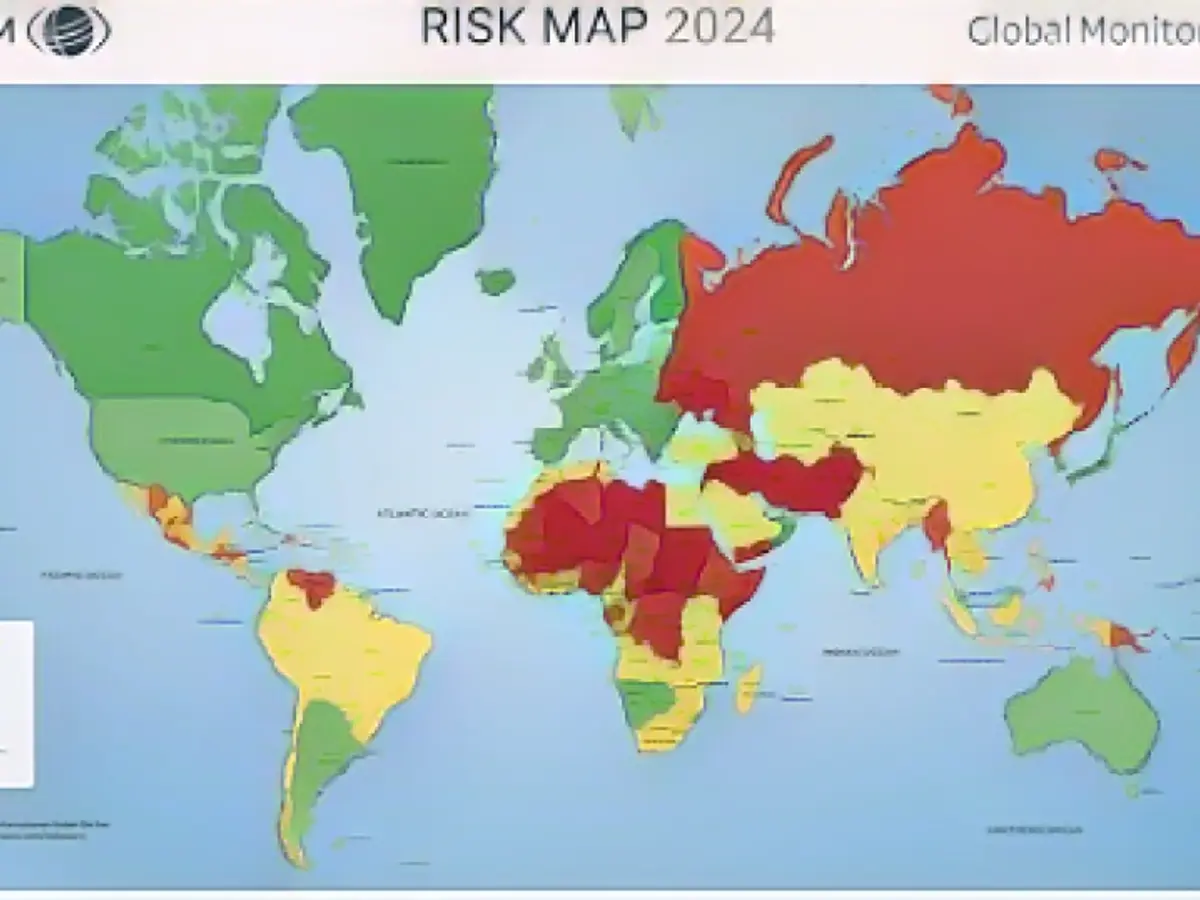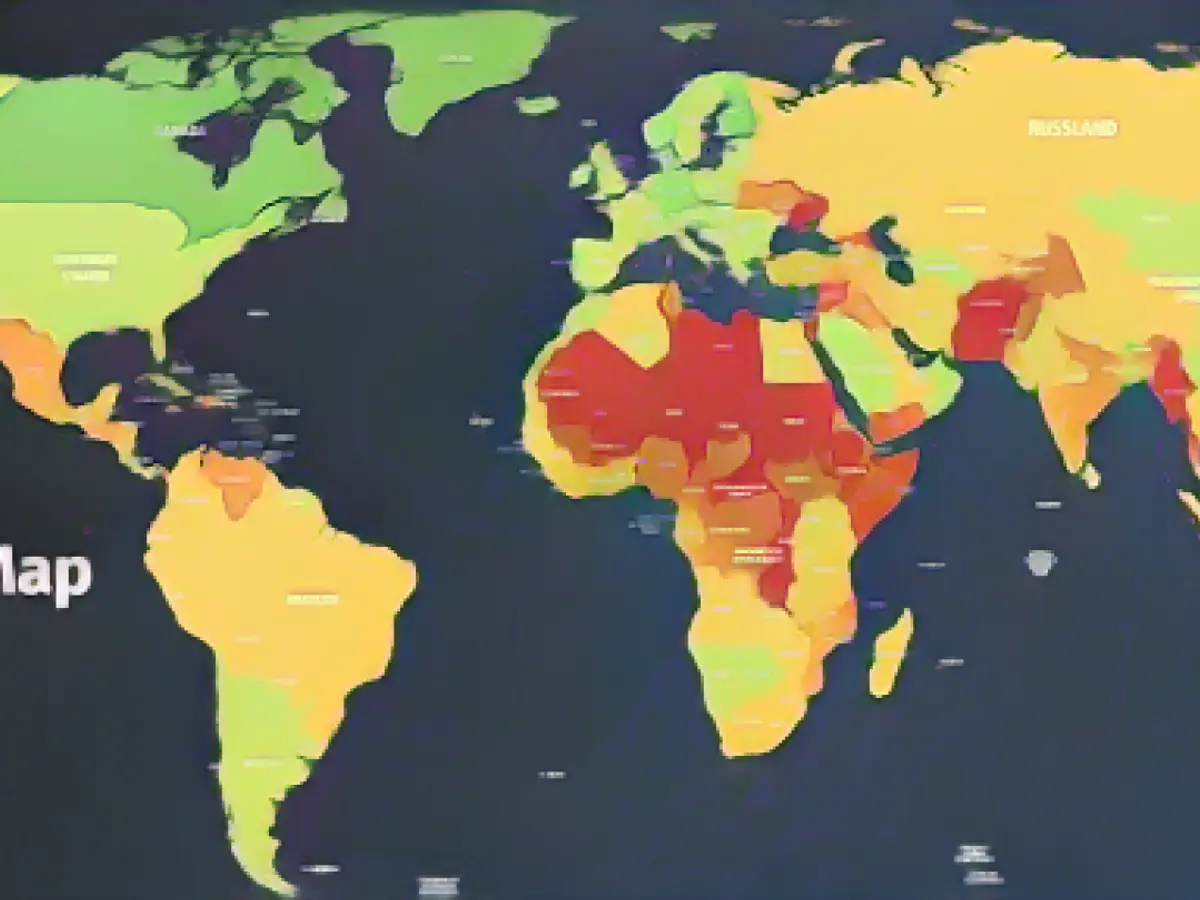War, climate and crisis - Risk Map 2024: These are the (un)safest countries for your vacation
Terrible wars are destroying the lives of thousands of people worldwide, the unmistakable consequences of the climate crisis are flattening entire regions, inflation and humanitarian crises are causing crime to rise in some places. Yes, the world once seemed a safer place. This not only has a significant impact on our general well-being, but also on our travel plans: if we feel unsafe on vacation, it is anything but relaxing. This makes it all the more important that we inform ourselves about the conditions at our destination when planning our trip.
The risk maps from software companies such as Safeture and A3M offer important pointers for this. Both companies specialize in safety analyses of travel destinations worldwide and publish an updated world map with the most unsafe and safest countries every year. The analyses are based on various data, such as travel warnings from the Federal Foreign Office, domestic media reports, crime statistics and - since the coronavirus pandemic - the infection situation in the country and the healthcare system.
Risk Map 2024: The safest countries in the world
And even if there are slight differences between the two risk maps, both teams of experts come to the conclusion that the global situation has become more confusing. In particular, recent events caused by individual extremists and rampant demonstrations surrounding the Middle East conflict mean that the risk in many countries is difficult to assess. But don't worry: there are still countries that you can travel to without hesitation. The world maps are color-coded according to the following risk levels: Low risk (dark green), low risk (light green), medium risk (yellow), high risk (orange) and critical risk (red).

The safest travel destinations in the world are therefore primarily European countries. But there is also a green light for some long-haul destinations. Canada, Australia, the Czech Republic, Iceland, Norway, Finland and Portugal are particularly safe. According to the risk analysis, Germany is also considered particularly safe to travel to. Meanwhile, countries such as the USA, Costa Rica, Cuba, Saudi Arabia, Morocco and Namibia are considered low risk. All of these countries can be added to the bucket list for 2024 without hesitation when it comes to safety.
The most unsafe countries and cities in 2024
However, anyone planning a vacation in Venezuela, Afghanistan, Myanmar, Pakistan, South Sudan, Syria or Yemen should think twice about their travel plans, as these countries are currently among the most unsafe in the world. This list also includes Ukraine, Russia and Israel. This year, the experts at Safeture have also identified the world's most unsafe cities for the first time. They advise against traveling to Tijuana (Mexico), Port-au-Prince (Haiti), Guayaquil (Ecuador), Kabul (Afghanistan), Port Moresby (Papua New Guinea), Lagos (Nigeria), Karachi (Pakistan), Gaza (Gaza Strip), Libreville (Gabon) and Khartoum (Sudan).
Sources: Safeture, A3M, International SOS
Read also:
- Accessibility on vacation: The most important tips - and best travel destinations
- The lame duck: Who is GDL boss Claus Weselsky?
- Delays and train cancellations: what rights passengers have in the event of a rail strike
- Fall asleep in Berlin, wake up in Paris: The comeback of night trains in Germany
The coronavirus pandemic and subsequent inflation have added new factors to consider in travel planning, making it even more crucial to stay informed about health situations and healthcare systems at potential destinations. sadly, this has resulted in a more complex global situation, with some areas becoming harder to assess for safety.
Despite the challenges, there are still countries classified as low or medium risk for travel, such as Germany, Canada, Australia, and several European nations. However, it's important to avoid certain regions with high or critical risk levels, like Venezuela, Afghanistan, and many cities in countries like Tijuana, Mexico, and Port-au-Prince, Haiti, as they continue to pose significant threats due to the ongoing climate crisis and humanitarian crises.
Source: www.stern.de








